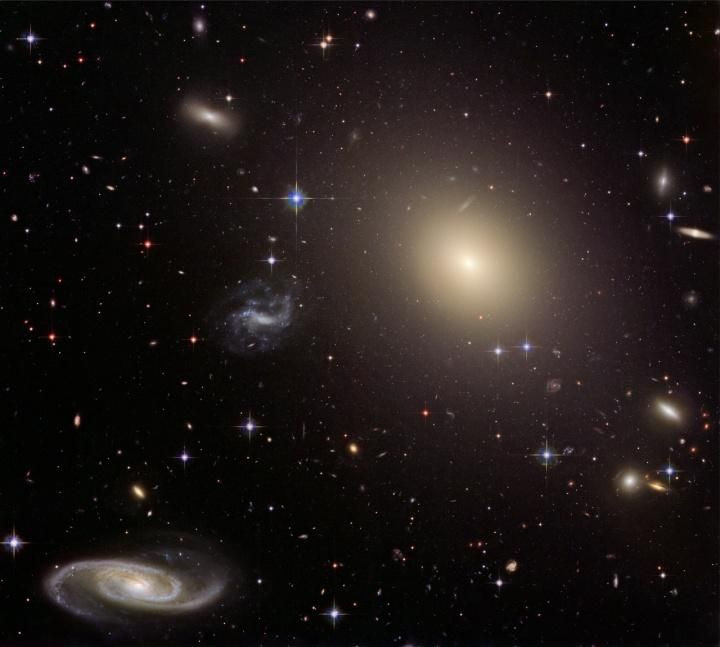Einstein’s General Theory Of Relativity Proven On Galactic Scale Beyond Milky Way

For the first time ever, an international team of astronomers has taken sophisticated observations to prove that Albert Einstein’s theory of general relativity applies even on large astronomical scales.
In 1915, Einstein proposed the theory of general relativity or GR explaining how gravity works on a cosmological level. According to his idea, very massive objects in the cosmos deform space-time around them and distort any light that passes by.
Though his theory has been precisely verified within the boundaries of our solar system on many occasions, its applicability wasn’t tested on large galactic scales because scientists had to look for galaxies aligned in a specific way, most of which are too far to be accurately observed.
“If two galaxies are aligned along our line of sight this can give rise to a phenomenon, called strong gravitational lensing, where we see multiple images of the background galaxy,” Thomas Collett, an astronomer from the Institute of Cosmology and Gravitation at the University of Portsmouth, said in a statement. “If we know the mass of the foreground galaxy, then the amount of separation between the multiple images tells us if General Relativity is the correct theory of gravity on galactic scales."
That said, Collet’s team took precise observations of one of the closest gravitational lenses available in the cosmos — an elliptical galaxy named ESO 325-G004, some 450 million light-years away from Earth. The group used data from ESO’s Very Large Telescope (VLT) to measure the movement of stars or how fast the bodies were moving in the distant galaxy to underpin its exact mass.
Once that was done, they turned to NASA and European Space Agency’s Hubble Space Telescope to take a close look at the same galaxy. The observation, as they expected, demonstrated the effect of gravitational lensing, revealing an Einstein ring around ESO 325-G004’s center, which had formed due to the deflection of light coming from a distant galaxy in the background. The strong lensing separations of the galaxy in the background helped the team precisely calculate how light and spacetime are being warped by the mass of ESO 325-G004.
“We know the mass of the foreground galaxy from MUSE (VLT’s instrument) and we measured the amount of gravitational lensing we see from Hubble,” Collett added in another statement. “We then compared these two ways to measure the strength of gravity — and the result was just what general relativity predicts, with an uncertainty of only 9 percent. This is the most precise test of general relativity outside the Milky Way to date. And this using just one galaxy!”
The verification of the theory, as the researchers described, lends further credence to the presence of dark energy, which, according to them, acts against gravity and accelerates the expansion of our universe.
The latest study titled “A precise extragalactic test of General Relativity” was published June 21 in the journal Science.
© Copyright IBTimes 2025. All rights reserved.





















